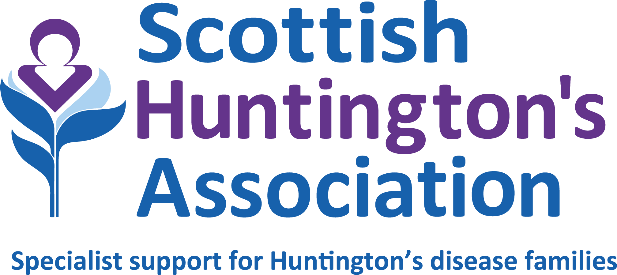News that 1:400 people may now be at risk of the degenerative brain condition Huntington’s disease (HD) made some alarmist media headlines recently.
The study was carried out by the University of Aberdeen working with colleagues from the University of British Columbia and the Coriell Institute for Medical Research. It was the first study to look at the numbers of people with the genetic change that causes HD. The results surprised researchers because they suggested the number of people who might have or go on to have HD is much higher than the current 1:5,000 prevalence.
But what does this actually mean for your average person?
HD is an incurable genetic condition that usually starts between the ages of 35 and 50 years. It causes severe cognitive change – a type of dementia, motor changes – loss of mobility, loss of swallow, loss of speech and mental illness – depression is particularly common, but also psychotic illness.
The HD gene has a section where three letters of the DNA code are repeated. We have known for some time that people who inherit the DNA CAG 36-39 repeats do not always develop HD.
We currently think that CAG repeats in this range are more commonly associated with late onset HD and it is therefore possible that we might begin to see increasing numbers of older people (65+) with symptoms of HD as the population overall ages. Being hereditary there is a real danger also, where there is no family history of the condition, that accurate diagnosis may not be given to future generations.
It is well known that this gene exhibits the phenomenon of anticipation and can therefore increase or decrease when it is passed from parent to child. This means that the children of those individuals who have an intermediate CAG repeat are at risk of inheriting an expanded mutation of the gene in the forty plus range. We are certain that, in this range, people always develop HD.
This study is a significant finding, but it is important that we do not rush to anticipate a doomsday Huntington’s scenario. While it seems the genetic change is more common than previously ascertained, 1:400 is still not a common disease.
It is important however, to raise awareness among health and social care staff and in particular among those who work with older adults so that the possibility of HD is considered when neurological changes consistent with the illness are identified.
No one wants to see an increase in the numbers of people living with this devastating neurological disorder, but the study does provide an important opportunity to raise awareness. The 10,000 people in the UK who already live with the condition deserve far greater recognition of the extraordinary impact of this disease. Awareness becomes an even greater issue for those with an intermediate diagnosis of the mutated gene and their children who don’t yet know.
Scottish Huntington’s Association and the Huntington’s Disease Association of England and Wales have both recently reported an increase in the number of referrals; 55% and 51% respectively. It is impossible to construe a direct relationship between that data and the study. Increasing awareness of the condition and improved support and services are likely to also be factors. It is increasingly clear however, that in order to support the numbers of people living with HD in a way that is comparable to other conditions: heart disease, cancer stroke, far greater resources than currently allocated are needed.
The journey towards finding treatments for HD is gathering pace and important clinical trials are now underway which everyone hopes will alter the progression of this condition and improve symptom management. The significance of this study is that, across the UK, we must support the European and International Partnerships conducting clinical trials.
The NHS has a key role in helping clinicians and Research and Development Departments to participate in these trials. If the number of people with HD is set to rise we will all be glad that investment was made now.
John Eden
Chief Executive,


Comments are closed.